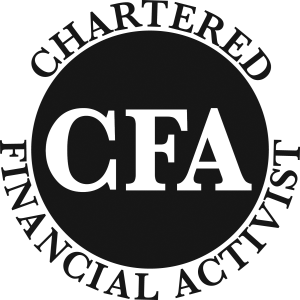“An investment in knowledge pays the best interest.”
– Benjamin Franklin
I just read an article reporting the fact that in 2015, the largest 600 or so U.S. banks generated $11.6 billion in overdraft fees, which amounted to 8% of their total profit in the consumer deposit business! This is a fairly large transfer of wealth from individuals to institutions, and to me it’s an amazing statistic and one that reminds me of how much unnecessary waste takes place in our economy.
In the early 1980’s, the A&W restaurant chain launched a hamburger designed to compete with the McDonald’s Quarter Pounder. A&W’s burger had a third-pound of beef, was less expensive, and was the preferred choice in numerous taste tests. Yet after an extensive ad campaign touting those benefits, the effort failed miserably. Only later during customer focus groups did the truth come out. The American Consumer was generally under the impression that one-third is less than one-quarter, and believed they were getting less burger for their money. After all, “4” is bigger than “3”! What A&W miscalculated was the astonishing extent to which America is mathematically challenged.
We can endlessly debate the reasons for why so many suffer from financial illiteracy. Maybe it’s not having enough emphasis in our educational system or during our general upbringing; perhaps it’s that most people find math and finance hopelessly boring and tedious; or the belief that certain people are just not predisposed to be very good at it. Regardless, the costs of this illiteracy are enormous.
There have been many studies on financial literacy regarding adults and students alike, and suffice to say the results are severely underwhelming across the board. For example, these three basic questions about compounding rates, inflation, and diversification appear in many of these studies:
1. Suppose you had $100 in a savings account and the interest rate was 2% per year. After 5 years, how much do you think you would have in the account?
a) More than $102
b) Exactly $102
c) Less than $102
2. Imagine that the interest rate on your savings account was 1% per year and inflation was 2% per year. After 1 year, would you be able to buy:
a) More than today
b) Exactly the same as today
c) Less than today
3. Is the following statement true or false? Buying a single company stock usually provides a safer return than a stock mutual fund.
a) True
b) False
Only one third of U.S. respondents aged 50 and older¹ answered all three basic questions correctly, and I haven’t seen a single example of these kinds of studies that produced anything but alarmingly poor scores.
And I would suggest that a popular tool that’s used across many schools in our country, a Stock Market Game competition, actually does a disservice to the effort of educating our students about investing. The sponsor of one such annual contest, SIFMA, is the brokerage industry’s trade association. SIFMA’s claim is that the game is intended to teach youngsters “the importance of long-term saving and investing” and “personal financial literacy”. Yet the contest entails using play money in a stock picking contest over a 14 week period, with the winner taking all. Perhaps teaching that wild speculation is a way to “win” at investing is exactly the wrong message? On the other hand, the cynical view would be that something like this is exactly what the brokerage industry wants to promote!
Of course, if you are in the business of selling credit cards, lotteries, casinos, online trading, or stock market newsletters, then you are thrilled at all of this financial illiteracy. The more the better. And the powerful engine behind the predators is always marketing, like these:
Good marketing appeals to our emotions, but the very best customers of these kinds of businesses are also the ones most likely to fail at grasping basic financial concepts. We know that you, as our clients, generally have a good handle on the fundamentals. Yet whatever the level of sophistication, it’s important to remember what adds value in investing and what doesn’t.
Think back to the three questions. As basic as they are, they remain some of the three most fundamental concepts to always keep in mind:
1. The power that compounding has over time in an investment portfolio
2. The risk that inflation reduces our real spending power
3. The strength of diversification as a way to reduce overall portfolio risk
As always, thank you for your trust and confidence in us. Your feedback is always welcome.
Michael Traynor CFA®
Chief Investment Officer
¹2004 University of Michigan Health and Retirement Study





